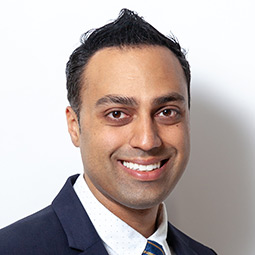Housing is an expensive investment. Not many people can afford to pay the cost of their home with a single transaction. It’s here that we enter the world of down payments and mortgages.
The down payment is the initial amount you pay toward the purchase price of a home (in cash). Most people typically borrow the remaining amount through a mortgage (a loan).
The total cost of the house determines the minimum down payment amount in Canada:
- A house that costs less than $500,000 can have a 5% minimum down payment
- On houses 500,000 to $1,499,999, you can pay 5% up to the first 500,000, & then 10% up to $1,499,999
- Houses at $1.5 million or more require at least a 20% down payment
A minimum down payment is enough to get you started. However, a larger down payment (at least 20%) is ideal and offers imrpoved financial security.
Navigating the complexities of the Canadian housing market is challenging enough as it is. Make life easier by connecting with Mortgage Connections for advice.
The Minimum Down Payment in Canada
Your down payment is discussed in terms of the percentage of the total cost of the house and can vary based on your lender’s requirements or the type of mortgage you’re looking for.
The minimum amount of your down payment in Canada depends on the purchase price of the home:
- Homes priced at $500,000 or less have a minimum down payment of 5% of the purchase price
- For homes priced between $500,001 and $1,499,999, you’ll pay 5% up to the first $500,000 and 10% up to $1,499,999
- The minimum down payment for a home priced at $1.5 million or more is 20%
Suppose you’re interested in purchasing a home valued at $750,000. Your down payment would be:
- 5% of $500,000 = $25,000
- 10% of the remaining $250,000 = $25,000
- Total Minimum Down Payment = $50,000
The Recommended Down Payment Amount in Canada
While you can own a home with only a minimum down payment, making a higher contribution to this initial amount is always recommended (if possible). We suggest making at least a 20% down payment.
If your down payment is less than 20% of the home price, you’ll need mortgage loan insurance, also known as CMHC insurance.
This insurance protects lenders (not buyers) if you’re unable to repay your mortgage. The cost typically ranges from 2.8% to 4% of the total loan amount, and it’s either paid upfront or added to your monthly mortgage payments.
With a higher down payment, you can reduce the size of your mortgage (lowering your monthly payments), reduce overall interest costs, and allow for greater financial flexibility.
The pros of a 20% down payment include:
- No mortgage insurance if your down payment is 20% or more
- Lower monthly mortgage payments
- Reduced interest paid over the life of the loan
- Quicker equity build-up in your property
The cons of a higher down payment include:
- You might need to wait longer to enter the market, especially in areas with rising home prices
- You’re likely tying up a significant portion of your savings in a single asset
- If you’re purchasing a home as an investment, a big down payment will lower your rate of return
- If your home’s value drops significantly below its purchase price, the only way to recover losses is to hope for market recovery

How Much Down Payment Do You Need for a House in Calgary?
Real estate in Calgary is relatively more affordable than other major cities like Toronto or Vancouver, making it an attractive option for homebuyers.
The Calgary market offers options for various budgets, but planning your down payment is essential to making your dream home a reality.
For instance, let’s look at an example where the average price of a Calgary home is approximately $645,000.
The amount for a minimum down payment:
- 5% of $600,000 = $30,000
- 10% of the remaining $145,000 = $14,500
- Total Minimum Down Payment = $44,500
If you’re aiming for at least a 20% recommended down payment:
- 20% of $645,000 = $129,000
With a higher down payment, you’ll avoid mortgage insurance and enjoy lower monthly payments.
Affording Your Down Payment
Saving for a down payment can be challenging, especially with today’s rising cost of living. If you’re struggling to save, there are programs to help Canadian homebuyers.
First-Time Home Buyer Incentive
The First-Time Home Buyer Incentive (FTHBI) is a government program designed to make homeownership more affordable. Under this program:
- The government offers a shared-equity mortgage of 5% or 10% of the home’s purchase price, depending on whether it’s an existing or new home
- You repay the same percentage (not the dollar amount) when you sell the home or after 25 years, whichever comes first
The FTHMI can lower your monthly payments, but it does mean sharing any future appreciation in home value.
Home Buyers’ Plan (HBP)
The Home Buyers’ Plan (HBP) allows you to withdraw up to $35,000 tax-free ($70,000 for couples) from your Registered Retirement Savings Plan (RRSP) toward a down payment. You won’t pay tax on the withdrawal if you repay the amount within 15 years.
For example, if you and your partner each withdraw $35,000 under the HBP, that’s $70,000 you can put toward your down payment!
If you haven’t already contributed to your RRSP, consider doing so. You will save on your taxes now and can later withdraw the amount for your down payment without penalty under the HBP.
Planning Your Down Payment with Expert Support
Your down payment contribution is foundational to your home-buying journey. It influences what you can afford and how much financial flexibility you’ll have in the future.
No matter your own ownership goals, understanding your options and strategic planning can help set you up for success.
Besides, individual lenders may offer different incentives and programs to help make your dreams of homeownership a reality. Connect with our Mortgage Connection team. Together, we can help you plan for your future.




